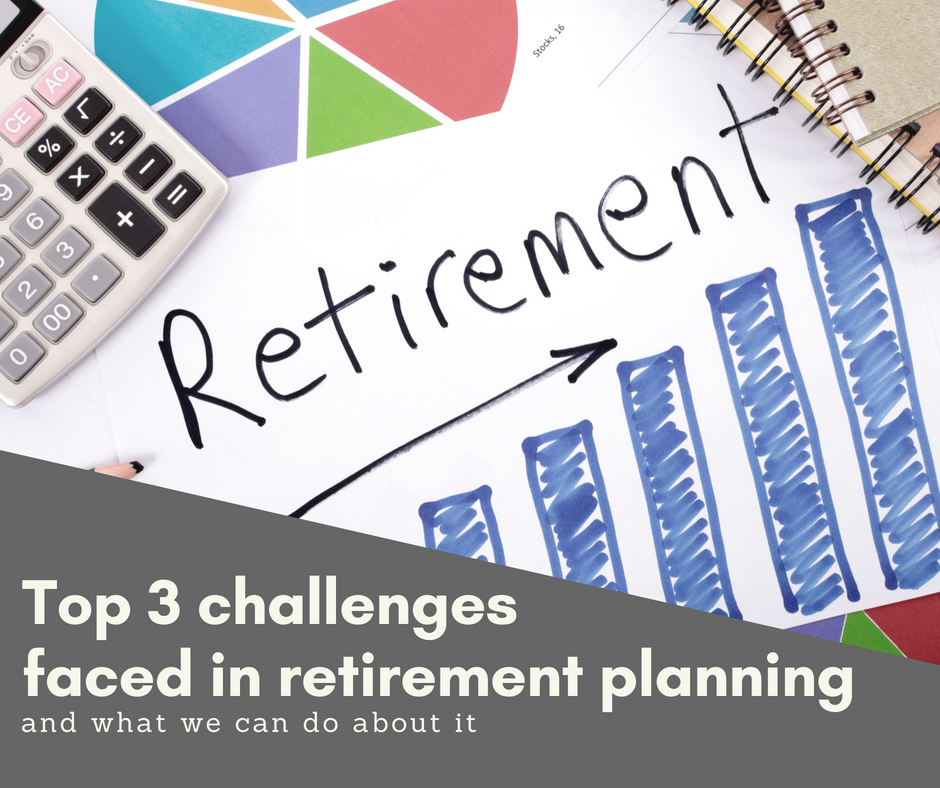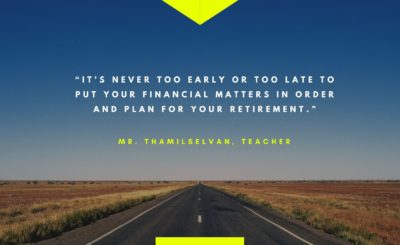When I talk to people about retirement planning, I often get comments like “Of course I want to retire, as soon as possible!” When asked the preferred age, some even jokingly said “like yesterday?”
Retirement is something many look forward to – a time of freedom when we can finally enjoy our life and doing what we love. Most of us understand intellectually it’s important to plan and save for the future. You have even told yourself at some point that “Ok I will start doing something about my retirement planning”. Yet when it comes to the actual execution, there’s always many “Buts…” that stops us from actively taking steps towards our retirement goals.
Let’s take a look at the 3 biggest challenges stopping people from planning for their retirement early and the solutions to tackle them.
1) No time to think about it
Some people say that our usual daily routine is already such a “struggle” that they have no bandwidth to think about the future. This is especially common among working parents trying to balance between work and family.
During office hours, you may be up to your neck, rushing deadlines and running back to back meetings. By the time you knock off, pick up the kids, have dinner and help them with their homework, you head for bed straight and retirement planning is the last thing you want to mention about.
What usually happens is that the planning stage is often delayed to some other day, thinking “it’s alright since we are still young, we can always think about it later. There’re plenty of time for us”. But as that “later” becomes months..and years.. by the time we finally decided to think about it, we may be already nearing retirement with limited time left.
So, how can we solve this challenge? Consider the following:
Set aside time for yourself for retirement planning
It can be as simple as an 1 hour session during the weekends where you spend some quiet quality time to yourself or with your spouse thinking about your desired retirement lifestyle. Retirement planning involves several steps and the 1st step starts with having a clear goal.
Some simple questions to answer would include:
- When do you want to retire? Is it age 50? 60? or 65?
- What is your ideal retirement lifestyle? And how much would that roughly cost in today’s dollars?
To help time starved working adults , I have specially created a simple 5 Steps Guide to Retire Happy. This guide breaks down the overwhelming retirement planning process into simple bite sized steps so you get the big picture and clarity of what to do, it also includes handy worksheets to guide you through the exercises and practical tips to build up your golden egg.
Remember this is for your own future well being. We can spend all our lives being busy with the urgent, immediate things; if we never set aside time for the important (but not urgent) things like planning for our future, we will never get to enjoy the quality of life we desire in future.
It’s the “younger you” today who will take care of the “older you” in future.
And the earlier you start, the easier it is to build up your retirement nest egg, because time is on your side.
Get support. We don’t have to do everything by ourselves
If you feel lost as to where to start or find the whole planning process overwhelming, one useful tip is to seek advice from a financial advisor with the skills and expertise to guide you through the process.
Having a trusted advisor to guide you through the process can shorten the time taken to customise a plan to suit your unique situation and goals. He/she can also help you implement and review your retirement plan along the way, so you can be free to focus on your life and have the peace of mind knowing your future is in place.
According to a retirement survey by HSBC, people who consulted a professional advisor for their retirement planning accumulated over 50% more than those who did not get professional help.
2) No money
This is another big one I hear often, especially among the sandwich generation who are feeling the squeeze. “Things are getting so expensive nowadays, I got my children expenses to settle, parents to support, house and car to pay for.. there’s hardly much left to save”
The retirement study also shows that 41% of Singaporean respondents do not save specifically for retirement and the number 1 reason is the rising cost of living expenses.
While the cost of living is a fact of life, it is possible to save consistently for the future – with the right strategy and discipline.
The successful savers are the ones who save first before spending and whom save intentionally for a purpose
- Start a retirement savings account and diligently save a portion of your income towards it every month. The use of auto giro or starting a saving/retirement plan can help enforce the discipline and make it easier on yourself.
- Experts usually recommend saving 15-20% of your income each month first before spending the rest. If finances are really tight, you can start with a smaller amount that is feasible. What’s important is to get into the habit of saving and taking that first step. As the maxim goes, a little a day goes a long way.
3) Uncertainty in the future
Perhaps you have already been saving diligently, and you might even have accumulated a tidy sum of savings… in the bank.
Question is:
Are you saving up as part of your retirement plan
OR
Are you saving and storing up cash “just in case”?
Yes, savings is important, however retirement planning is not just about saving.
It requires being clear of your retirement goals, knowing how much you need and setting up a plan to achieve that goal, systematically over time.
Saving alone is limited, because the low interest rates cannot even keep up with inflation. Keeping all your savings in liquid cash purely “just in case” can mean losing precious time and opportunity to grow your retirement funds.
If you have been procrastinating to get started on a retirement plan because you are afraid of tying up your cash in a longer term commitment, here’s something to think about: What would be some “just in case” incidents that can impact your longer time plans? Perhaps it is unforeseen circumstances like losing your job and not able to support your plans? What if you fall ill and need money urgently?
To address these uncertainty, what you can do is:
Set up contingency plans to manage the financial impact from such incidents
For example, you can:
- Set aside a 6 month emergency funds in case of a loss of job
- Get comprehensive medical insurance to cover for medical bills so you don’t have to empty your savings
- Opt for plans with flexible options that can be activated in case of cash flow constraints, e.g temporary suspension of premiums.
The key is to start planning and taking active steps towards your retirement goal, so you can create some certainty in this increasingly uncertain world.
Imagine having a peace of mind knowing there is a pool of funds or an income stream you can count on when you stop work and something to look forward to in your golden years..because you took that first step when you were young.
I hope that you have find this article useful as much as I do and it will motivate you in starting your retirement planning. Do also remember to download your free guide: 5 Simple Steps to Retire Happy and set yourself up for a happy and secured retirement! :)
To Your Success and Happiness,
Yong Hui









